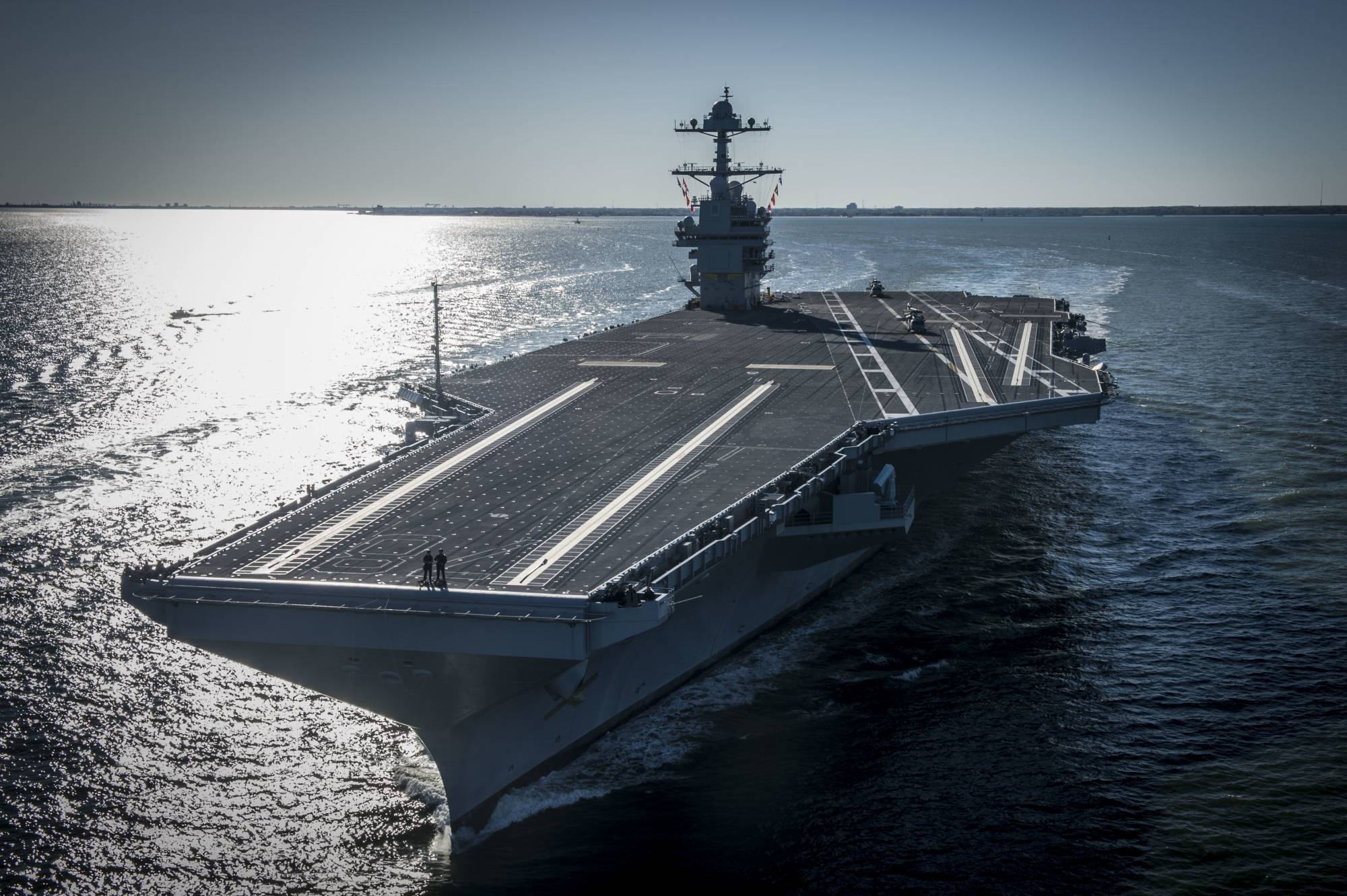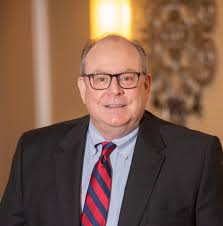How the Army is bolstering its organic industrial base to keep tanks running
Tanks, armored vehicles, trucks: The Army buys them all from contractors. But over their sometimes long life cycles, the Army relies on its own production and...
Tanks, armored vehicles, trucks: The Army buys them all from contractors. But over their sometimes long life cycles, the Army relies on its own production and maintenance facilities. Those make up what the military calls the organic industrial base. At this week’s Association of the U.S. Army (AUSA) conference, the Federal Drive with Tom Temin Fgot an in-person, one-on-one update from Brig. Gen. Michael Lalor, the Commander of the Army’s Tank-automotive and Armaments Command.
Interview Transcript:
Tom Temin The Great TACOM in the great city of Detroit. How are things out in Detroit?
Brig. Gen. Michael Lalor It’s an exciting time to be in Detroit, really a hub of innovation out there. Quartered at Detroit Arsenal. We have us obviously working the sustainment, but you also have the great program, executive Officers for Ground Combat systems and then combat service support up there working and acquiring, you know, new hardware for the Army. But then you also got the cross-functional team up there from the ground combat system. So it really is a great place to serve. I’ve been up there two months and we really have the team of teams up there, almost a model for the Army in terms of how we integrate all our functions and modernize.
Tom Temin And just give us the outlines of TACOM’s purview, where it begins, where it ends with respect to fielding a ground system.
Brig. Gen. Michael Lalor System. Absolutely, sir. I mean, TACOM, we affect, you know, ground combat systems from the strategic support area for the strategic base all the way to the tactical edge to the unit employment. Detroit, Michigan, is where the headquarters is. We have six depots and arsenals around the country and continental United States. So Sierra Army depot, California. Red River, Army Depot, Texarkana, Texas. Anniston Army Depot in Alabama, Rock Island, Arsenal, the Joint Manufacturing Technology Center there in Lima, Ohio. We have the Joint Systems Manufacturing Center, which is the tank production right there. And then also Watervliet Arsenal in Albany doing a Cannon II production, really a unique capability there. And then, of course, you know, we can maintain, reset, manufacture equipment in those arsenals in depots around the world and then move it to the point of employment by the tactical units. And then at each of our locations where units are in the field, you have a TACOM logistics assistance representative right there, primarily focused on maintenance. But he or she can also work some supply integration. And of course, we’re partnered with our partners, working for our military sales. And of course, a lot of our work right now is production of equipment going into the Eastern European fight or maintaining our own army’s readiness.
Tom Temin Absolutely. Well, for two months on the job, you have good command of all the parts and pieces thank you all for.
Brig. Gen. Michael Lalor Yeah, it is. It is it is big. But, you know, absolutely. I really enjoy it.
Tom Temin Now, last year when we were at this booth, there was a tank right across from us, a Stryker tank. And that was not built originally by the army. That was made by a contractor factory.
Brig. Gen. Michael Lalor That’s right.
Tom Temin And so in the lifecycle of that piece of equipment, when does it become the TAACOM’s purview to, say, make spare parts for or to repair or otherwise refurbish?
Brig. Gen. Michael Lalor Yeah, I mean, we go through an extensive process when we get a piece of equipment, ground combat systems or otherwise that is made by an original equipment manufacturer. We go through the entire process and look at it from a sustainment perspective, go through a series of everything from the supply chain on it to how it’s maintained, where it will be maintained, either at the tactical level or even us at the sustainment level. And then eventually we decide to fully, if that’s a program of record, that we’re going to fully material release and then and manage from the Army’s perspective, eventually it over time, it’ll transition from the contractor through the lifecycle management command model and then we’ll take it on. And then and then from there, you know, all the things that happen in that supply chain, Hey, you have a part, it’s provisioned by this vendor, it’s managed, we give it a stock number, units can then order it or, you know, in terms of all the technical manuals and data that comes with it, you know, we have that published and are now training in that in a force. Truly, that’s really what we’re all about at the end of the day is integrating all those supply and maintenance functions of a system and then enabling a unit to function with it and fighting one with it on the battlefield.
Tom Temin And at some point you have that organic industrial capability within take home. If you have to fabricate something, you can do that.
Brig. Gen. Michael Lalor 100%, sir. I mean, inside our organic industrial based specific to those sites I talk with TACOM, you know, if we need something manufactured, we do have capabilities, manufacture, if we need to contract, we have the partners in Army Contracting command within AMC. We can bring in what we need from a supply chain or specific vendor and then integrate that to help the unit and get it to the part they need. But that is really a unique part of what we do. We can manufacture, we can additive manufacture these days. We have a really array of capabilities within an industrial base to allow the army to maintain itself, to surge sometimes. And also I look at it as like our insurance policy, you know, when we need to shoehorn a surge into a wartime situation, that’ll buy time and space for our industrial base.
Tom Temin To because some of these things are like model TS, you could actually make one from scratch if you had to.
Brig. Gen. Michael Lalor Yeah, we could. If we had the technical specifications in that data. You know, we have the talented people inside that base who could take those materials, then turn those materials into the system and then integrate all that, you know, whatever the specific supporting elements of it and put.
Tom Temin Now the organic industrial base has come under scrutiny lately because it seems to be strained, as is the commercial industrial base for a lot of things that the army needs consumes, it has to have on hand in large volume. You know, in the case of conflict, should that happen. So what is going on from your standpoint of TACOM to reinvigorate the organic industrial base of DoD?
Brig. Gen. Michael Lalor We’ve been doing that for several years now. And then what we’ve seen here with Eastern Europe has really allowed us to put a lot of that in operation and also to see where we need to go in the future. So I would start going back to some good analysis that was done by the Army in 2019 and looking at the organic industrial base, eventually an approved organic industrial base modernization plan funded through our partners in Congress, $18 billion across 15 year plan here in AMC TACOM. We have 6 of those 23 depots and arsenals. We probably have about 30%, almost five and a half billion of the 18 billion that is surging into our facilities, our capital investment, really into the talent, you know, and upskilling our people. And really the work that we’ve had come under in terms of the demands from either supporting the war in Ukraine or supporting the army really has allowed us to exercise some good systems and put it in play. And we’ve seen some dramatic uptick in terms of work, which helps our skills and ability. You know, I would say it’s like repetitions. Able to exercise our systems at Watervliet, at Red River, Anniston, really across the whole team. So and it also shows to where we got to go in the future for making sure we got some either public private partnerships established or some good industry connections so that we can surge in the future. I’ve embraced it. I think TACOM’s embraced it. We really have risen to the challenge. Amazing what we’ve been able to do in terms of supporting all our allies simultaneously and then also executing what we need for our army.
Tom Temin Now, a lot of this work requires specific skills, welding the ability to program and operate numerically controlled machines or computer controlled machines metallurgy, really, and so on. Do you find a challenge in getting the personnel you need?
Brig. Gen. Michael Lalor In the Army and also commercial sector? There is the drive for talent right now. I feel like we’re in a good place, but we’re open for business. We’re looking for new upskill talent to bring in and develop some new skilled workers, like you said, and, you know, new and emerging skill sets, whether in, you know, metal works or we’re talking manufacturing or we’re talking to that in manufacturing. So but I think what’s great in TACOM, we have a talent development program now, which is really the model for AMC in the Army in terms of upskilling and modernizing our workforce. But also it extends to how we educate our workforce. And that even includes apprenticeship programs at local technical schools, universities in and around our depots and arsenals. And it’s really having some good effects in terms of bringing some renewed energy, some new talent and also merging that with upskilling our existing workforce, kind of getting this convergence of the older and the newer going on. It’s actually driven our workforce average age down in a few places like Watervliet Arsenal, good example, probably is driven their average work age down nine years in just about four years. And that’s pretty important.
Tom Temin Yeah, because I’ve been to Watervliet many years ago and it was not exactly youngsters operating some of the machines up there.
Brig. Gen. Michael Lalor Now you walk around there, you know, I’d like to think of myself as still young, but our average age workforce up there is about 38, so it has come down a lot and you get a lot of young professionals in there working on the lines, especially they’re attracted to by some of the technology we got. And so when you’re thinking about something like Watervliet, when we make a breach block for a cannon, we used to do what it used to take us like 30 different processes in steps. Now we got this upskilled machinery as modern as anything anybody else has in the world ministry wise. And now they’re working two steps and they’re doing it at a much higher capacity and rate and the job satisfaction attracts. It’s a good time. It’s a good time to be serving.
Tom Temin And fair to say, you probably are not recruiting on the picket lines of the UAW at this point in Detroit.
Brig. Gen. Michael Lalor No, no. And you know, we wish all that well, but we have no problems in bringing in talent and we support all our partners in the area. But the arsenal, we got our own workflow going, our own talent and our arsenal is open for business around the country. So.
Tom Temin All right, final question on the raw materials. What does that look like in terms of availability? Because some of these metals are highly specialized. They’re not just sheet steel, you can buy anywhere and so on. And there’s also the inflationary effect. Yeah, because of the energy that goes into manufacturing the raw materials.
Brig. Gen. Michael Lalor Yeah, I think we had in the last several years we’ve had some supply chain challenges with some of those materials that were in high demand. I think we’ve come through a lot of that challenge right now. We’ve got a really good partnerships with getting the raw materials we need. When I think about places like Red River and Anniston and again back to Watervliet and even Rock Island, they’re able to get their materials. And in some of those locations, we’re able to, I would say, almost execute process and manufacture ahead now where we’re starting to get a little depth and some surge capacity in on the materials. So we’re doing pretty good from a materials perspective. I think one of our challenges TACOM-wide is still some of the demands on vendors for supply chain and specific parts for systems that might be aging or obsolete. We’ve had to be creative in different ways in terms of getting and working through getting obsolete parts, whether you’re making them ourselves or working through second, third party suppliers. But we’re in a good position from a raw materials perspective right now.
Tom Temin And you must get a lot of feedback from these platforms in the field so that you know, well, golly, when it gets to be 19 years old, that’s the U joint that’s going to go. You can build those in anticipation of the fleet of whatever the platform is of needing that U joint. And you won’t wait till the failure.
Brig. Gen. Michael Lalor Absolutely. I think we have good data on a lot of those systems, especially those have been in use for a while and we can take that data and then our skilled supply chain managers. You know item managers can look ahead and get deeper and try and get us some depth in some of those areas. Not saying that’s always an easy task, but they do have the data to literally inform their actions. Then from what we’re buying and buy with some precision. And again, that’s another good example of improved precision sustainment from the perspective of TACOM.
Tom Temin All right, you drive an automatic or a stick shift.
Brig. Gen. Michael Lalor I have driven a stick shift, so I don’t know how many Americans still can. But these days, an automatic.
Copyright © 2024 Federal News Network. All rights reserved. This website is not intended for users located within the European Economic Area.
Tom Temin is host of the Federal Drive and has been providing insight on federal technology and management issues for more than 30 years.
Follow @tteminWFED







